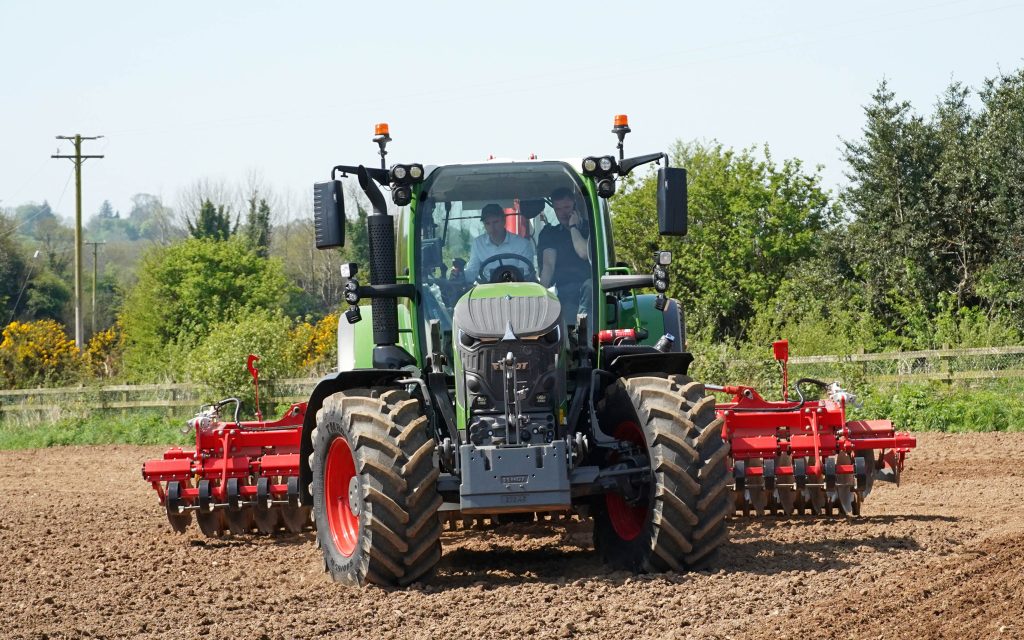AGCO has been keen to advertise that it has developed a new engine family designed to remain in production for the next couple of decades at least, and Fendt is the first of the corporation’s brands to benefit from it.
Known as the Core series of engines, they are made at AGCO Power’s Linnavuori plant in Finland, around three hours drive to the south-west of the Valtra factory at Suolahti.
There were three main design imperatives in the planning of the new power units – they were to be robust, power dense, and future-proof, in that they must be able to run a variety of fuels with little or no modification to the major components.
Agritechnica launch
Fendt announced in time for Agritechnica 2023 that it would use the engine in a new range of tractors known as the 600 series – the first examples of which have now made their way to Irish dealers.
Kehoe Bros Machinery Ltd. of Co. Wexford were one of the first to bring one in to use as a demonstrator and Agriland went along to see it in action on a glorious spring morning on a nearby farm.
Although there is much that is new about the model, the biggest step forward for tractors generally is that this is the first readily available four-cylinder machine to be rated at over 200hp.

As standard, the engine will provide 209hp, but this will rise to 224hp when peripheral services such as engine fan and air conditioning are brought into service.
It is a novel approach which underlines the company’s commitment to looking anew at each engineering challenge that designing a new tractor presents.
Front-wheel drive
Also new to tractors generally is the drive system, which has the ability to disconnect the the rear wheels during headland turns.

Full traction is not normally required during this part of a field operation, so it is perfectly possible for the front wheels to pull the tractor around in a circle rather than have the rear axle try and push it around.
This, Fendt claims, allows a much tighter turning circle than could otherwise be expected and, when sat in the driver’s seat, there is certainly the sense that the rear axle is not trying to bulldoze the front of the tractor in a direction not intended by the driver.
Fendt attends to comfort
While in the tractor seat, the comfort of the working environment should not be overlooked, as the cab provides a noticeably serene space that is not bothered by engine noise or the normal ruts of secondary cultivations.
Fendt is almost feared by some as being over-complicated, as the multitude of switches and lights are somewhat reminiscent of ‘Star Trek’, yet in the brief period Agriland spent behind the wheel, the simplicity of the controls gave immediate confidence.

As Sean Gorman, area manager for Fendt in Ireland, has previously explained, the brand has adopted a policy of making its tractors easy to operate at the basic level, yet offering far greater involvement for those who want to operate them at peak efficiency.
Pulling a set of discs is a straightforward operation, and so was operating the tractor while doing so.
No fuss needed
Having a continuously variable transmission (CVT), there are no gears to worry about so it is a question of selecting the direction and pressing the throttle pedal until the desired speed is attained.
Nudging the joystick to the right tells the tractor to maintain this speed automatically, which it does, adjusting the engine revs to suit, while three further buttons engage auto steer and the lowering and raising of the implement on the headlands.

On the day, pulling a 6m Pottinger disc set with roller caused the engine to turn at 1,240rpm while travelling at 10km/h, the real-time fuel consumption indicator hovered around 24L/h.
It was all very simple and relaxed, yet the waylines and implement settings had already been programmed in so that part of the operation was avoided.
Fendt has left the tractor perfectly useable without having to engage any of the more advanced systems on board – they are there to be used and appreciated as operators become familiar with the machine.
Meanwhile the rest of us can sit back and enjoy the experience.

